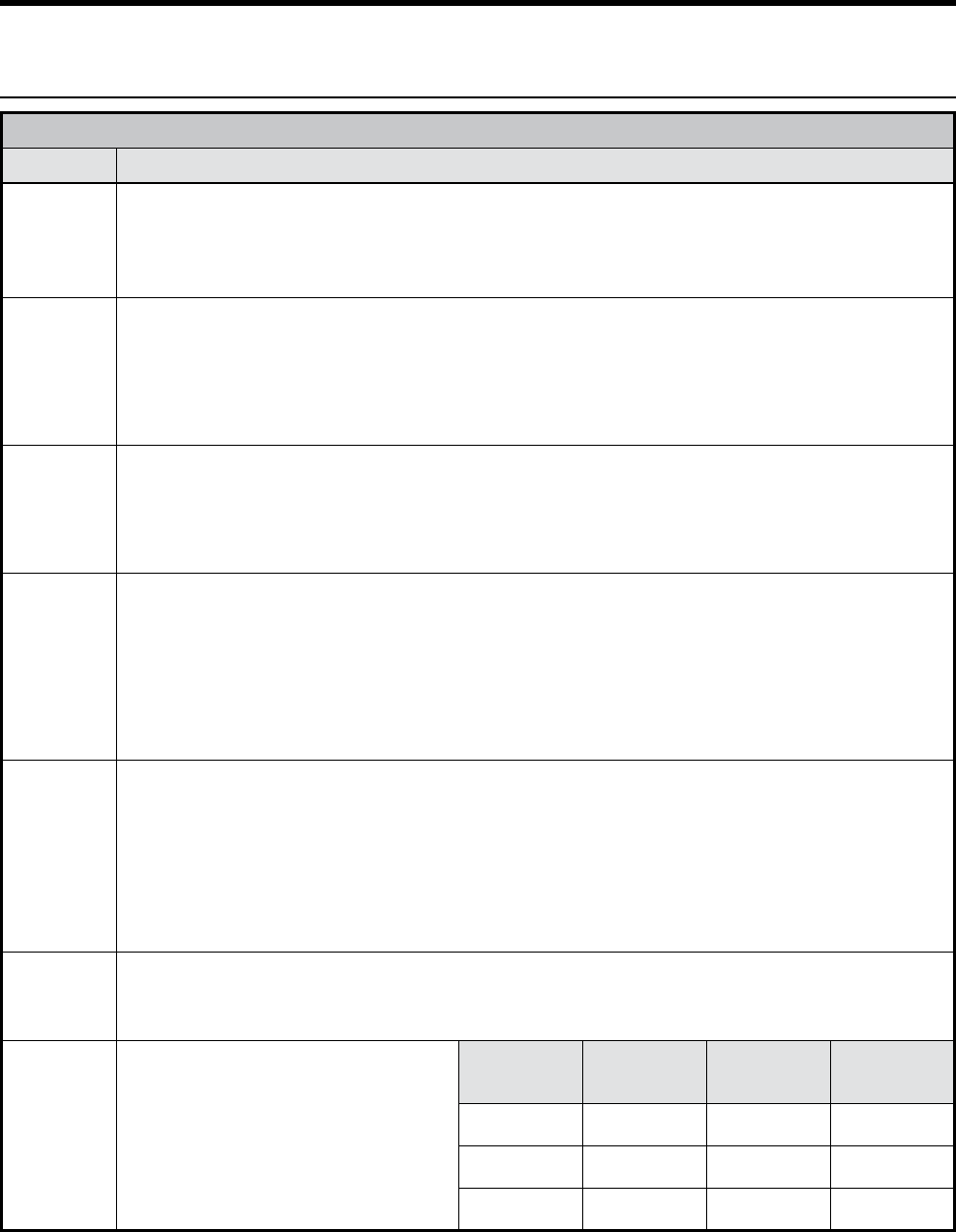User Manual

26 English
Operating the Oven
Cooking Tips, cont.
COOK MODE AND COOKWARE
Subject Tip
Bake,
Convection
Bake, Pure
Convection
• Do not open the oven door frequently; check doneness through the door window when possible.
• Use a timer to time baking functions.
• Check doneness at the shortest suggested cook time; for cake/brownies, a wooden toothpick/skewer poked
through the center should emerge clean.
• For best results, measure ingredients carefully and follow proven recipes.
Convection
Bake
• This mode cooks most foods at lower temperatures for shorter periods of time, while producing superior results.
• Typically, you can reduce temp by 25°F and cook for 10% less time; baked goods have golden-brown crusts with
• Some conventional recipes, especially homemade, may need testing and adjusting when converting to con-
vection baking; prepare a proven conventional recipe using the above convection time/temp guidelines; if the
results are unsatisfactory, adjust one variable (e.g., cook time, rack level, temperature), and repeat the test; if
needed, adjust one more variable, continuing this method until you achieve satisfactory results.
Broil
• Always set a timer when broiling.
• For even cooking, start with a room-temperature broil pan.
• Use tongs or spatula to turn/remove meats; piercing meat lets juices escape, leading to less desirable results.
•
• Lightly grease broiler grill; excess grease causes excessive smoke.
• To ease cleanup, remove broil pan and grill with food; discard grease, and soak cookware until ready to clean.
Roast
• Dacor’s optional roasting pan offers excellent results.
• Dacor’s optional “V” shaped rack (placed in the roast pan) allow air circulation around food.
• Insert temperature probe halfway into center of thickest part of meat; (poultry) Insert probe between body and leg
into thickest part of inner thigh; for accurate readings, probe should not touch bone/fat/gristle; check meat temp
second reading is lower, keep cooking.
• Let roast stand 15 – 20 min's after removal to ease carving.
• Roast times vary with size/shape/quality of meats and poultry; less tender cuts are best prepared in Bake mode
and may need moist-cooking techniques; follow your favorite cookbook recipes.
Bakeware
• Dacor full-sized cookie sheets take best advantage of rack space; (see Pg. 4, Customer Assurance info to order).
For best results, use recipe's suggested pan size/type.
•
• Use medium-gauge-aluminum baking sheets when preparing cookies, biscuits, and cream puffs.
• Bake most frozen foods in their original foil containers on a cookie sheet. Follow package directions.
• Glass bakeware: Reduce recipe temperature by 25°F (except for pies or yeast breads).
• Follow standard recipe bake time for pies and yeast breads.
• Warped, dented, stainless-steel, and tin-coated pans do not give uniform baking results.
• Place pans carefully on the oven racks with long sides running left to right.
Multi-Rack
Baking
•
and frozen prepared foods can be cooked on two or three racks simultaneously.
• Typically, when baking on two racks, choose from Levels 2, 4, and 6.
• When adapting a single-rack recipe to multi-rack baking, cook times may be longer due to greater volume of food.
High-Altitude
Baking
The higher the altitude, the longer foods take
to cook, so some recipes need adjusting. (Usu
-
ally, rising baked goods need no adjustment,
but letting the dough rise twice before the
adjustments at right. Note the changes that
work best, and mark your recipes accordingly.
-
Altitude
(ft)
Baking Powder
(ea. tsp, reduce
amt. by %)
Sugar
(ea. tsp, reduce
amt. by %)
Liquid
(for ea. cup,
add %)
3000 5 – 10 10 – 25 5 – 10
5000 10 10 20
7000 25 20 20 –25










